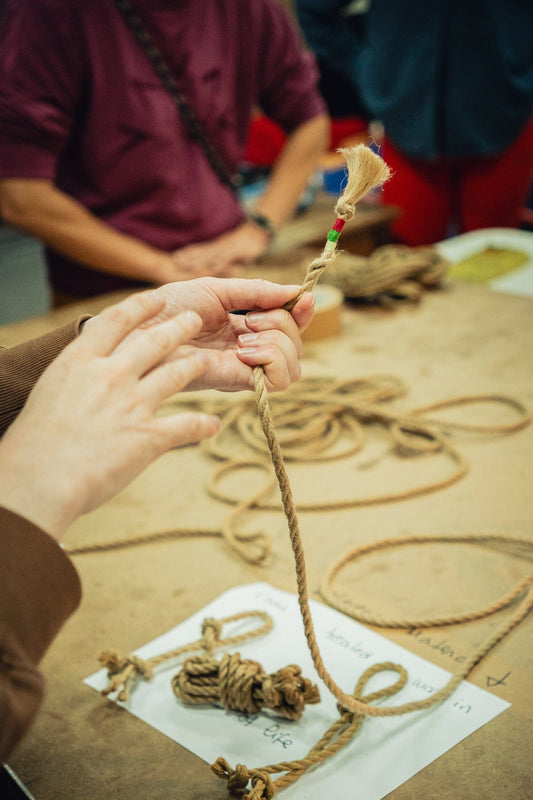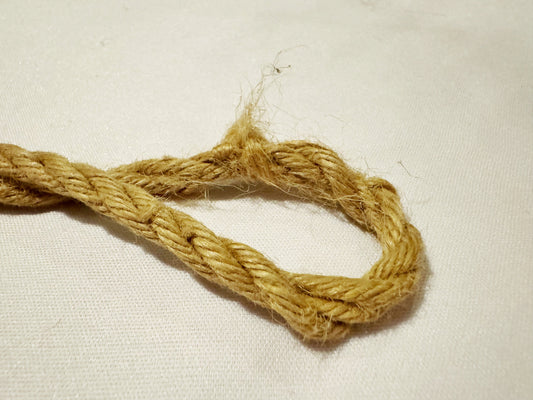Most people prefer to buy their ropes treated, meaning that we do the labour-intensive process of breaking the ropes in for you. However, even treated ropes will require a bit of maintenance to make them last as long as possible. We've put together this concise guide on how to keep your ropes feeling great.
Hang your ropes
If you can, hang your ropes between sessions to let them air and straighten. This gets rid of twists and kinks in the rope for a more fluid tying experience. You can use curtain rails, doors, bannisters for example. Most of us don't have 8 metre ceilings, but it's ok to fold the ropes a few times. Make sure you leave enough room between the ropes to let them air out fully.
Wipe your ropes
This is particularly useful when the ropes are newer. You can do this by running your hands through the rope from the bight to both ends one at a time. You generally want to rotate your hand while wiping to avoid loosening the twist (in other words, rotate in the direction of twist of the strands). This helps to rebalance the rope strands as well as moisturises the ropes via your body's natural oils. You might notice the bight naturally twists over time - don't forcibly undo this, as that will lead to high-stranding. To remove that twist you need to use a repeated wiping technique to move the twist down to the knotted ends.
Check for wear and tear
Check for signs of wear in your ropes between sessions. In particular look for "popped" strands. These look like hairs sticking out of the rope. They will be particularly noticeable at the bight. You should retire these ropes as suspension lines as these ropes are now weakened and at a greater risk of breaking. You can use them for floor play and body harnesses. Alternatively you can cut them into shorter ropes for finishing ties.
Pull rather than pushing ropes
When tying, avoid pushing ropes as this may cause the strands to split, and causes premature damage to the fibres. Pulling is much more efficient and produces a more fluid tying experience.
Singe, oil/paste
When the ropes are newer they will get a bit "hairy" after tying. They can also get a bit dry. Over time, with tying, the ropes will get polished through use and as they absorb your natural body oils. You can however speed up this process artificially by singeing the ropes over an open flame to burn the "fuzzies" and by moisturising your ropes with oil and/or paste. How much oil or paste you use is a matter for personal preference, and also depends on the ambient humidity where you're tying. In general more oily ropes are suited to humid climates.
Storage: to hank or not
When storing your ropes for travel and/or before a session, hank the ropes in such a way to minimise the amount of twists and folds introduced into the ropes. Twisty ropes make tying less fluid and require more maintenance. Don't make your hanks super tight, as it creates kinks in the ropes and prevents air circulation around the inner fibres. If you're bundling your ropes for a long time stick to really loose hanks, like folding the ropes over twice and then tying a simple overhand knot.






